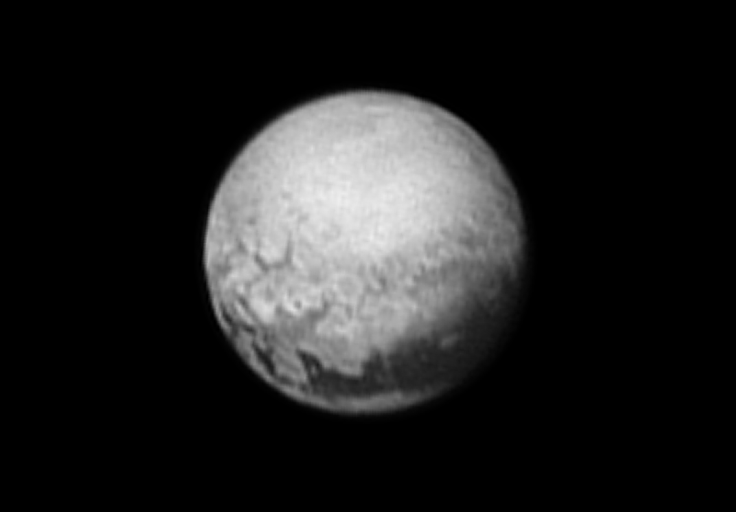New Horizon image reveals surface patterns on Pluto

Bearing down upon Pluto in the countdown to the 14 July flyby, Nasa's New Horizons has already started sending jaw-dropping images of the dwarf planet.
The latest picture released on Saturday (11 July) throws light on the surface geology of Pluto, revealing a vast band of patterned terrain stretching across roughly 1,500 km.
Unusual polygon-shaped features and sharp transitions between bright and dark regions along the equator known as "the whale" have had project scientists excited ahead of Tuesday's rendezvous.
"Among the structures tentatively identified in this new image are what appear to be polygonal features, a complex band of terrain stretching east-northeast across the planet, approximately 1,600 km long and a complex region where bright terrains meet the dark terrains of the whale," principal investigator Alan Stern said in a Nasa post.
The image has a resolution of 27 km per pixel and shows the hemisphere of Pluto that always faces Charon.
On 14 July at 11.50 GMT when the probe is just 12,500 km above the surface, the images will be much better at 100 metre per pixel.
This latest shot from telescopic camera Lorri was taken on Thursday (9 July) when New Horizons was 5.4 million km from Pluto.
It shows "the whale" at the bottom while the very bright region dubbed a "heart" has rotated out of view.
Amazing 10-year journey
Travelling at 50,400 km per hour at present, New Horizons has covered the nearly 5 billion km distance from Earth with a mere 170 pounds of hydrazine propellant. The light weight of the craft and the time of launch helped to achieve the space flight in such a short period.

After lift-off, New Horizons received a velocity boost from Earth's movement around the sun at approximately 31 km per second.
Spinning into the solar system, the probe had amassed a heliocentric (sun-relative) speed of nearly 160,934 km per hour but this was almost halved as it slowed down nearing Jupiter, calculates Gizmodo.
Gravity assists from gigantic Jupiter further boosted the probe's velocity to over 83,685 km per hour but in the seven years hence the speed has relatively reduced to the 50,400 km per hour.
From Pluto to the icy Kuiper belt will take another three to four years.
Nasa will take a final decision on the Kuiper Belt extension after the Pluto flyby.
© Copyright IBTimes 2025. All rights reserved.





















